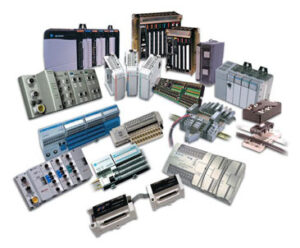Say Goodbye to Harsh Lighting – LED Dimmer Switches for Every Room
In the realm of lighting technology, the evolution of dimmers and dimmer switches has been nothing short of revolutionary. From...

In the realm of lighting technology, the evolution of dimmers and dimmer switches has been nothing short of revolutionary. From the early days of simple rheostats to today’s sophisticated digital dimming systems, the ability to control the intensity of light has transformed how we illuminate our spaces. With the widespread adoption of LED lighting, the demand for compatible dimming solutions has surged, prompting manufacturers to innovate and refine their offerings. In this article, we delve into the world of light dimmers, focusing particularly on dimmer switches for LED lights and exploring their functionality, benefits, and pricing considerations.
Understanding Light Dimmers
A light dimmer is a device used to vary the brightness of a light source by altering the voltage or power delivered to the lamp. Traditionally, dimmers operated by adjusting the electrical resistance in the circuit, effectively reducing the amount of current flowing to the bulb. While this method worked well with incandescent and halogen bulbs, it was not always compatible with newer lighting technologies like LEDs.
LEDs (Light Emitting Diodes) operate differently from traditional filament-based bulbs. They require precise control of current rather than voltage, making them inherently incompatible with conventional dimming methods. However, with advancements in electronics and semiconductor technology, dimmer manufacturers have developed specialized circuits capable of dimming LED lights effectively.
Dimmer Switches for LED Lights
Dimmer switches are the user interface for controlling light dimmers. They come in various forms, including rotary knobs, sliders, touch panels, and smart switches that can be operated remotely via smartphones or voice commands. When it comes to LED lighting, selecting the right dimmer switch is crucial for achieving smooth dimming performance and ensuring compatibility with the chosen LED fixtures.
Unlike incandescent dimmers, which are generally interchangeable, dimmer switches for LED lights must be specifically designed to work with LED technology. This is because LEDs have unique dimming characteristics that require specialized circuitry to achieve optimal results. Using an incompatible dimmer can lead to issues such as flickering, buzzing, or limited dimming range.
Manufacturers of LED dimmer switches often provide compatibility lists or compatibility checkers on their websites to help consumers identify suitable dimmers for their LED fixtures. These lists typically include information about the minimum and maximum load ratings, as well as any compatibility issues with certain LED models.
Benefits of Dimming LED Lights
Dimming LED lights offers several benefits beyond just adjusting brightness levels. One of the primary advantages is energy savings. By dimming LED fixtures, you can reduce power consumption and extend the lifespan of the bulbs. This not only lowers electricity bills but also reduces maintenance costs associated with replacing bulbs frequently.
Another benefit is the ability to create ambiance and mood lighting. Whether it’s a cozy evening at home or an intimate dinner setting in a restaurant, dimming allows you to tailor the lighting to suit the occasion. Soft, dimmed lighting can evoke feelings of warmth and relaxation, while brighter lighting may be preferred for tasks requiring more visibility.
Furthermore, dimming LED lights can enhance visual comfort by reducing glare and eyestrain, particularly in environments where bright lighting may be harsh or uncomfortable. This is especially important in spaces like offices, classrooms, and healthcare facilities, where occupants spend extended periods under artificial lighting.
Dimmer Switch Price Considerations

The price of dimmer switches for LED lights can vary depending on several factors, including the brand, features, and design. Basic rotary or slide dimmer switches typically range from $10 to $30, making them a cost-effective option for simple dimming applications in residential settings.
For more advanced dimming capabilities, such as compatibility with smart home systems or multi-location control, the price may be higher, ranging from $30 to $100 or more. Smart dimmer switches equipped with wireless connectivity and programmable features tend to command a premium price due to their added functionality and convenience.
It’s essential to consider not only the upfront cost of the dimmer switch but also the long-term savings and benefits it can provide. Investing in a quality dimmer switch that is compatible with your LED fixtures can result in energy savings, improved lighting control, and enhanced overall satisfaction with your lighting setup.
Conclusion
In conclusion, light dimmers and dimmer switches play a crucial role in modern lighting design, offering flexibility, energy efficiency, and enhanced comfort. With the rise of LED lighting, the demand for compatible dimming solutions has surged, prompting manufacturers to innovate and refine their offerings.
When selecting a dimmer switch for LED lights, it’s important to choose a model that is specifically designed for LED technology to ensure optimal performance and compatibility. Consider factors such as price, features, and compatibility with your existing LED fixtures to make an informed decision.
Whether you’re looking to create ambiance in your home, improve visual comfort in your workspace, or simply reduce energy consumption, investing in quality dimmer switches for LED lights can bring significant benefits and enhance your overall lighting experience.






